List of Authors
>>About this blog
Recent blog post
|
[Hikoharu Co., Ltd.]
July 29, 2018 14:00
The Hakozaki River consisted of a main stream of 1.06 km from Nihonbashinakasu to Nihonbashi River, and a tributary of 0.12 km between Nihonbashinakasu and Nihonbashihakozakicho. And in 1971, the main stream was reclaimed and disappeared in 1972. At this time, Nihonbashihakozakicho and Nihonbashinakasu became the first land connected to Nihonbashikakigaracho and Nihonbashihamacho. By the way, Nihonbashinakasu has a single town name that does not have a "Chome". The reclaimed land has the Metropolitan Expressway and the Tokyo City Air Terminal.
This project is to walk along the site of Hakozaki River.
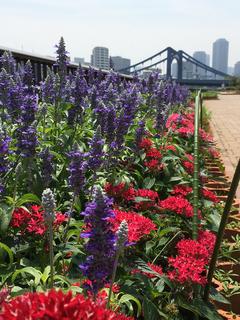 
The starting point will be a little upstream of Kiyosu Bridge. Even today, there was a sluice gate.
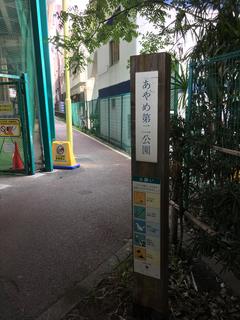 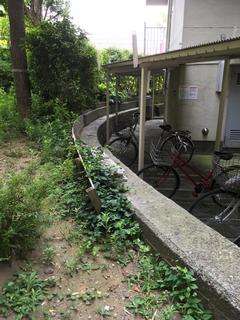
When I got off the Sumida River Terrace, it was Ayame Daini Park. Ayame's name comes from Shobu Bridge on the Hakozaki River. The photo on the right seems to be the revetment of the Hakozaki River. The seawall curves to the right, but this land was the tip of Nakasu.
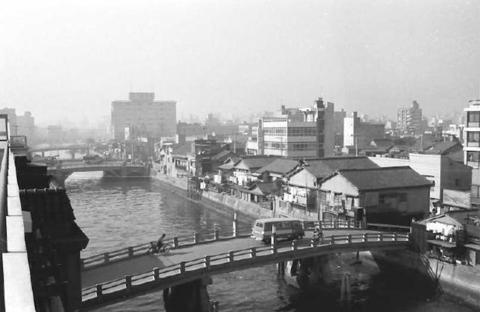
"Photos provided by Chuo Ward Kyobashi Library"
From the bridge in the foreground to Otokobashi and Shobu Bridge Membashi. In other words, it was taken from the Nakasu tip area to Hamacho and Kakigara-cho.
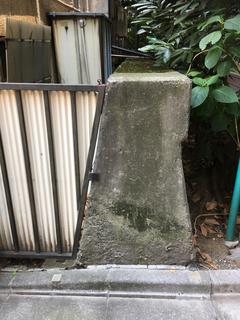 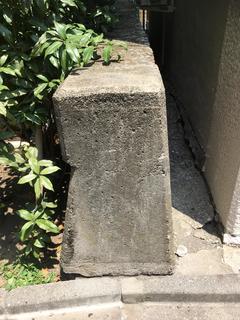
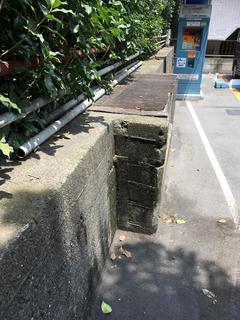 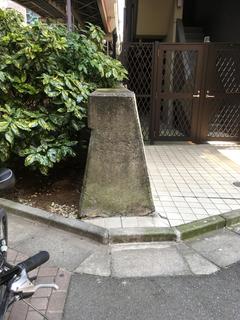
Walking through Ayame Park, you can see a number of revetments of the Hakozaki River.
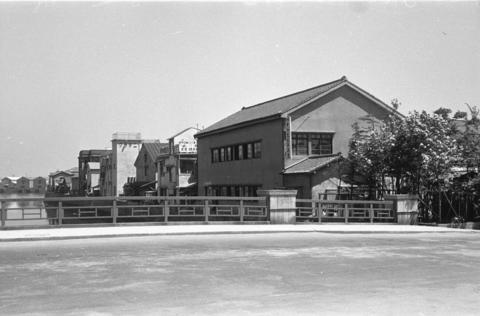
"Photos provided by Chuo Ward Kyobashi Library"
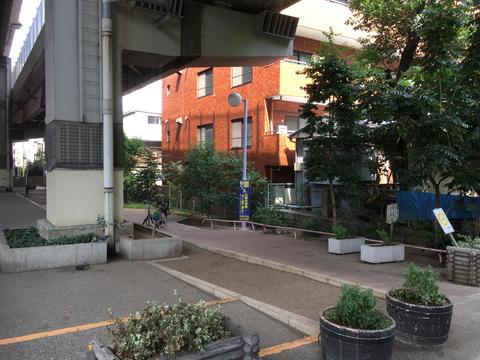
The photo above shows Shobu Bridge in the Showa 30s below shows the current ruins of Shobu Bridge. The top of the Hakozaki River is the Metropolitan Expressway. Kotohira-gu Shrine is located behind the trees on the right side of the upper and lower photo. Kotohira-gu Shrine still stands at the base of Shobu Bridge.
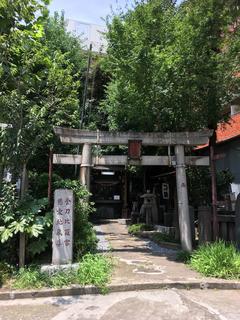 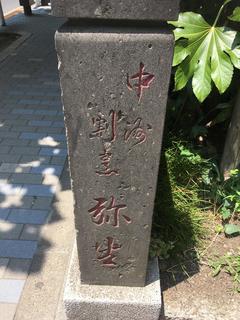
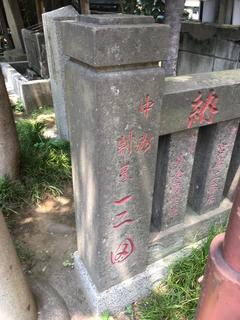 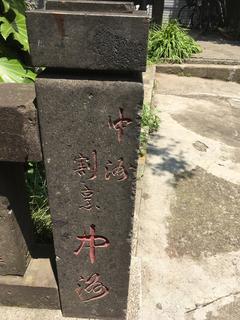
The photo on the upper left is from the front of Kotohiragu Shrine. If you look at Tamagaki contributors, you will notice that there were many Kappo cuisine restaurants such as Yayoi Nakashu Kappo cuisine, Mita Nakashu Kappo cuisine, Nakashu Kappo cuisine Nakashu. Today Nakasu is full of condominiums and I can't imagine that there was such a Kappo cuisine restaurant in Nakasu. And it is Masago-za that must not be forgotten in Nakasu.
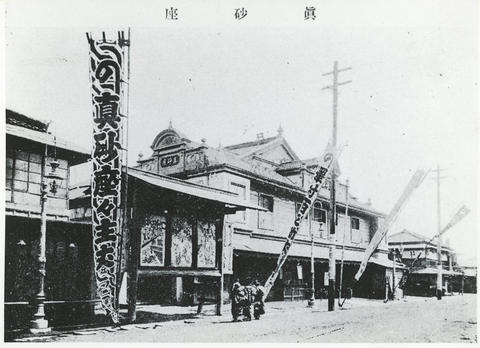
"Photos provided by Chuo Ward Kyobashi Library"
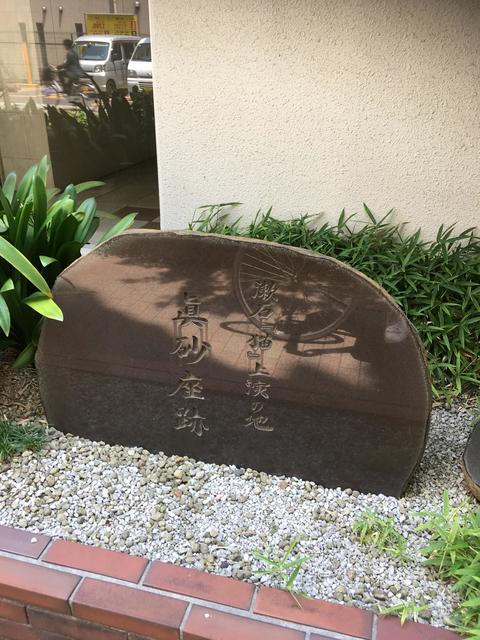
The photo above is Masago-za in the Taisho era. The photo below is a stone monument of the site of Masago-za, which remains sorry for the planting part of the apartment.
"Masago-za was built in January 1893 in Nakashu-cho, Nihonbashi-ku, and was named after its name in the drama history from the latter half of the Meiji era to the Taisho era, eventually connecting a free theater and later developing into a Tsukiji Small Theater. Abbreviation
・・・ Since 2014, Nakashu was Masago-za, and Masago-za was synonymous with Chushu."
"From the history of Chuo-ku,"
However, due to the inconvenience of the location, the number of customers was far away, and in 1917 it was closed.
And when you walk to the entrance of the Metropolitan Expressway Hamacho, it used to be the junction of the Hakozaki River and Hamacho River.
In the photo, the right is Mebashi, the front is Kawaguchi Bridge, and the front is Hamacho River ahead.
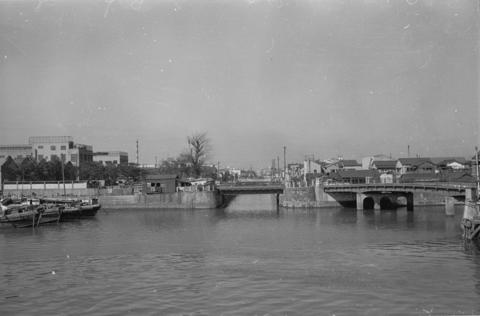
"Photos provided by Chuo Ward Kyobashi Library"
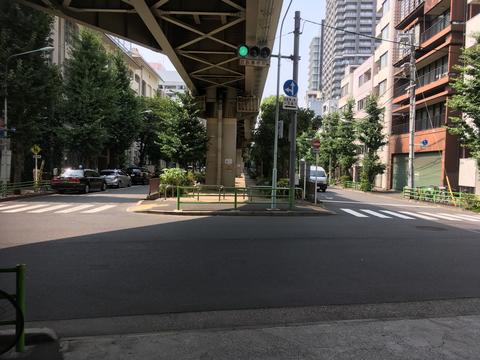
At present, it is the entrance to Hamacho Ryokudo Park.
Then cross the Tokyo City Air Terminal and head toward Hakozaki. I also found the revetment of the Hakozaki River next to the sidewalk that I have visited hundreds of times so far. I regretted a little that I didn't notice anything when I walked with B.
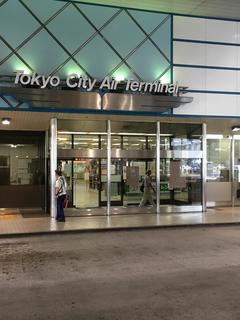 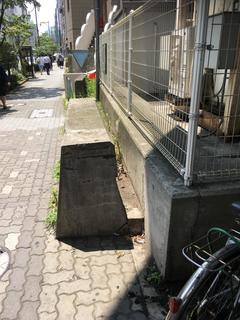
The photo in the lower left is a photo of Kakigara-cho from Shin-Eikyu Bridge. The photo at the bottom right shows the current photo. The photo on the left is probably in the 1940s. The window frame of the building on the left side of the photo matches the sign of the dental under the window.
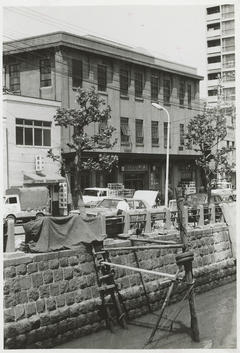 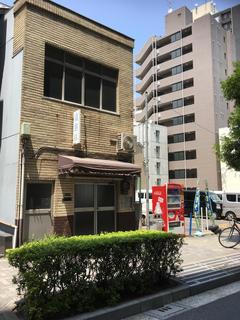
"Photo courtesy of Kyobashi, Chuo-ku Library"
And I came to Hakozaki River Daini Park and Hakozaki River Daiichi Park.
This is also the end of this city walk. I can see the sluice gate of the Kamejima River.
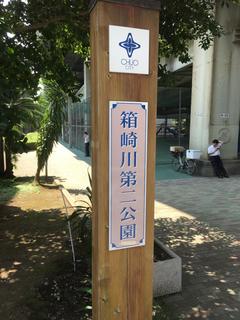 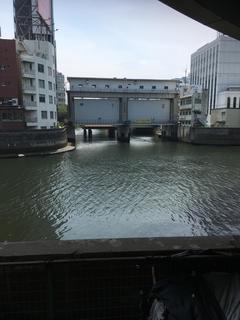
Hakozaki River, the revetment traces still remain everywhere. I wondered that Nihonbashinakasu is now coming and going as usual, but it wasn't connected to land until just 46,47 years ago. It was also a good opportunity to reconfirm the history of Nihonbashinakasu.
It's been a hot day since then. Be sure to practice hats and frequent water supply when walking around the city.
[CAM]
July 26, 2018 14:00

The Metropolitan Police Department (police organization in charge of Tokyo) has ten headquarters, and Chuo-ku is under the jurisdiction of the first headquarters. There are 102 police stations in Tokyo, but there are Chuo Police Station, Hisamatsu Police Station, Tsukiji Police Station, and Tsukishima Police Station in Chuo-ku, and police boxes are set as follows.
(Central Police Station)
- Nihonbashi Koban (1-chome, Nihonbashi, Chuo-ku)
- Honmachi police box (4-chome, Nihonbashi-Honmachi, Chuo-ku)
- Kayabacho Police Box (Nihonbashi Kabutocho, Chuo-ku)
- Yaesu-dori police box (3-chome, Nihonbashi, Chuo-ku)
- Hatchobori Koban (3-chome, Hatchobori, Chuo-ku)
- Takahashi Koban (2-chome, Shinkawa, Chuo-ku)
(Hisamatsu Police Station)
- Higashinihombashi Koban (2-chome, Nihonbashi Bakurocho, Chuo-ku)
- Hamacho police box (2-chome, Nihonbashi-Hamacho, Chuo-ku)
- Suitengu-mae police box (2-chome Kakigaracho, Nihonbashi-ku, Chuo-ku)
- Hakozaki Police Box (Nihonbashi-Hakozaki-cho, Chuo-ku)
- Toyabashi Koban (Nihonbashi Hisamatsucho, Chuo-ku)
(Tsukiji Police Station)
- Ginza 4-chome police box (Ginza 5-chome)
- Ginza 1-chome police box (Ginza 1-chome)
- Sukiyabashi Koban (Ginza 4-chome)
- Odawara-cho police box (Tsukiji 6-chome)
- Minato Koban (Minato 1-chome)
- Central Market Police Box (Tsukiji 5-chome)
- Shintomicho Koban (Shintomi 2-chome)
- Ginza 8-chome police box (Ginza 8-chome)
(Tsukishima Police Station)
- Kachidokibashi Koban (Kachidoki 1-chome)
- Tsukuda Koban (Tsukuda 2-chome)
- Harumi 3-chome police box (Harumi 1-chome)
- Harumi Wharf Security Police Station (Harumi 5-chome) Converted from police box in April 2007 (2007).
Other
・River City Representative Office (Tsukuda 1-chome)
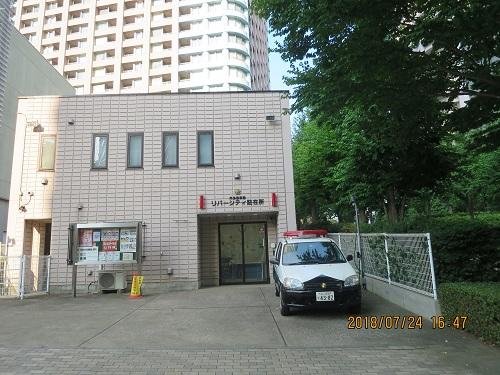
・Nishinakadori Regional Safety Center (Tsukishima 3-chome)
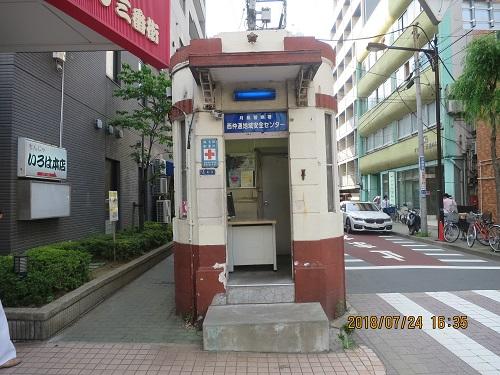
This "Nishinakadori Regional Safety Center" is explained on page 106 of "Monoshiri Encyclopedia (issued in October 2017)".
If you look at the name of the police box above, of course, there are many cases where the place name of the location is attached (however, like Harumi 3-chome police box, the name is 3-chome but the location is Harumi 1-chome There are examples), but Odawaracho police box refers to the old town name instead of the current town name. Odawara-cho (currently Tsukiji 6.7-chome) is the name of the town from 1932 to 1966 ("Monoshiri Encyclopedia (October 2017)" page 175)
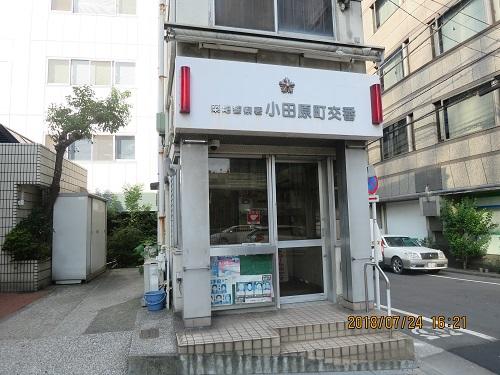
[Hanes]
July 26, 2018 12:00
Hello. This is a new correspondent, Hanes. 
Suddenly, it's a question to you!
What was the fourth Sunday of July (the 22nd this year)?
The answer...
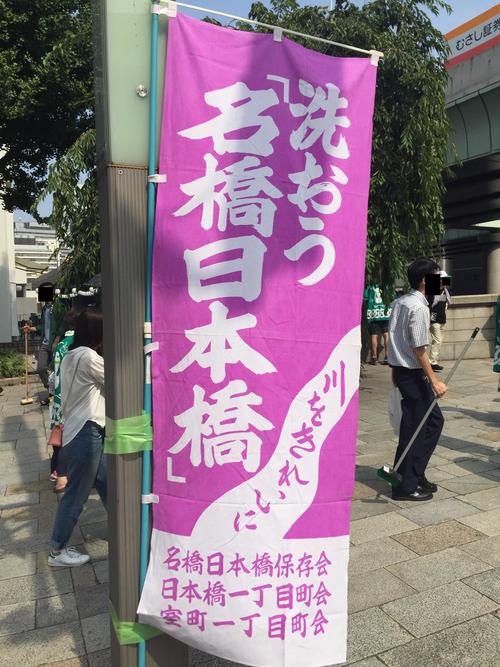
The day of Nihonbashi, a famous bridge that has been established as a summer tradition in Chuo-ku.
Blessed with the weather, volunteers, including those who commute to work or school in Nihonbashi, gather and gather.
On this day, Nihonbashi started a lively and cool start in the morning.
This time, I would like to tell you about such a bridge wash!
When I went to Nihonbashi around 9 o'clock, the participants have already gathered.
I was taking a commemorative photo for each company.
On the other hand, the fire brigade has secured a lot of water for cleaning and is ready.
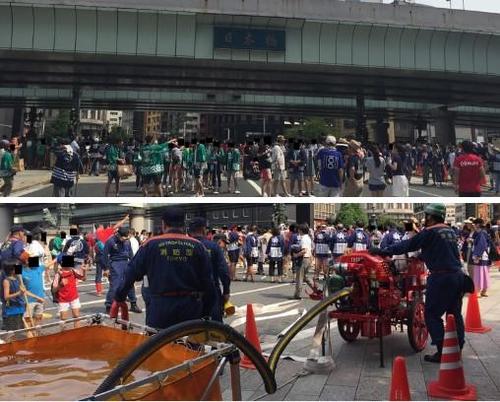
After a while, there was an announcement saying "Please leave the road."...
When I was thinking about what would happen, a watering car that sprayed water vigorously came!
The water used here is reused water.
I was able to unexpectedly learn about environmentally friendly initiatives.
After the watering truck passed, preparations for hoses were started to secure more water.
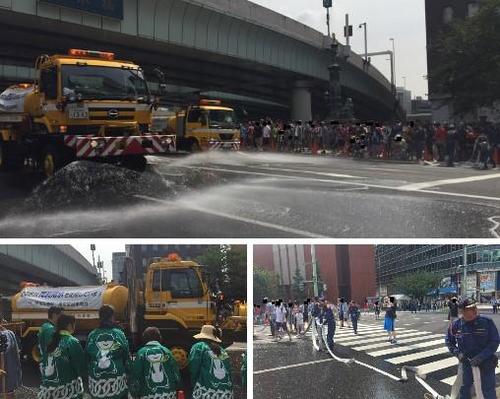
Once the water reaches the entire road in this way, everyone starts washing the bridge!
There are many people working in Nihonbashi at the center of the bridge, and in a slightly distant place, local elementary school students worked hard to brush bridges and roads with brushes.
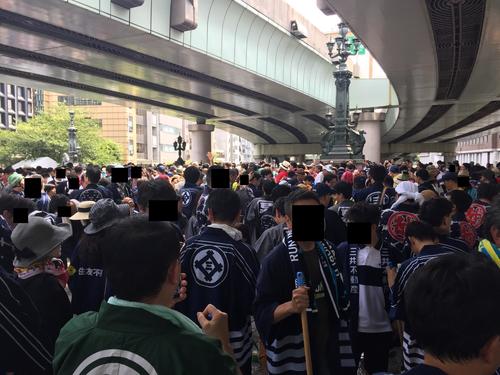
When the bridges and roads became beautiful to some extent (before 10 o'clock), the ladder truck finally stood by.
The water was discharged to the Nihonbashi plate, which showed the most exciting this morning.
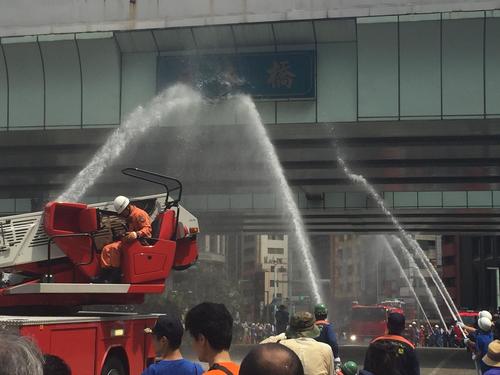
After that, two local elementary school students cleaned the plate with the fire brigade and finished washing the bridge.
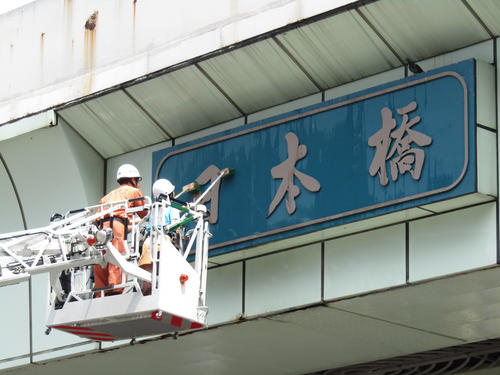
Everyone who participated, thank you very much during the hot weather!
This time, I saw the bridge wash for the first time.
・More people participated than expected.
・men and women of all ages What anyone can enjoy
・It was a good place to interact not only with employees but also with those working in the same area.
・Everyone worked hard with the same purpose of making Nihonbashi beautiful.
It was especially impressive.
It's a wonderful event that I want you to continue.
[Shiba Inu]
July 24, 2018 09:00
The Tokiwa Bridge area, located on the north side of Tokyo Station, is undergoing large-scale redevelopment. It was completed in 2027. A new city surrounded by greenery will be born. For details → Here。
Well, with that!
At present, successive Godzillas are landing on Tokiwa Bridge.
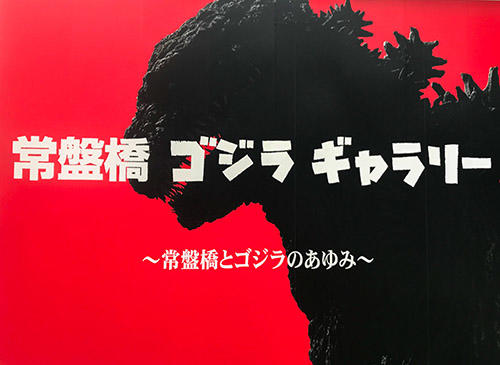
To be precise, the temporary enclosure of the construction is the Godzilla Gallery.
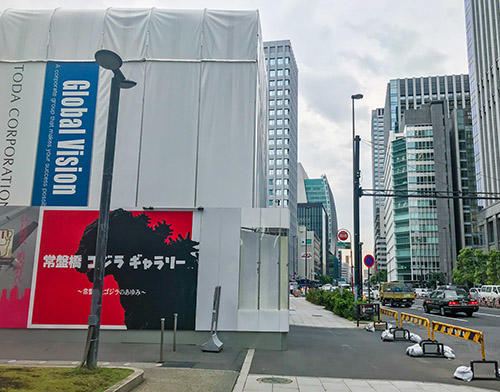
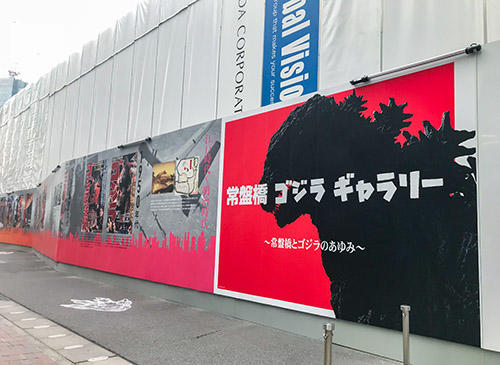
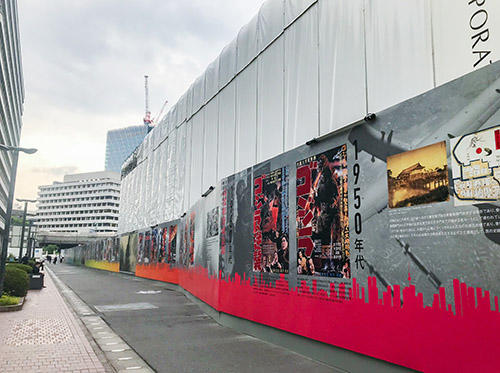 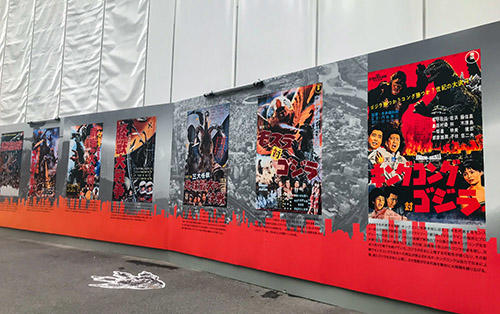 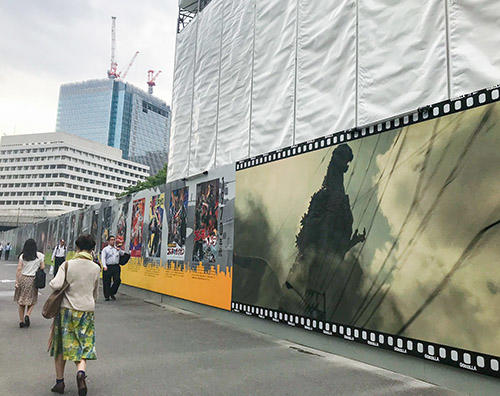
The posters, commentary, chronology, etc. of all 29 works at the time are lined up, and it has been transformed into a very impressive street where the Showa era is transmitted.
Of course, there's a lot.
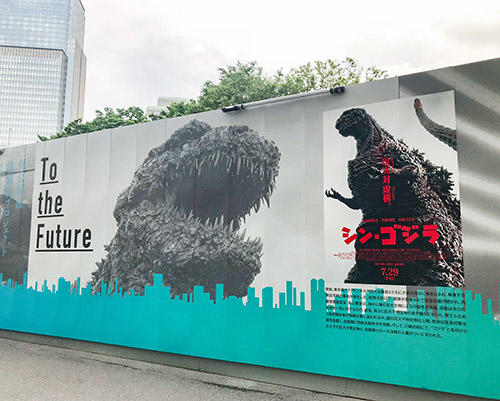
There are also footprints of Godzilla, so don't miss it!
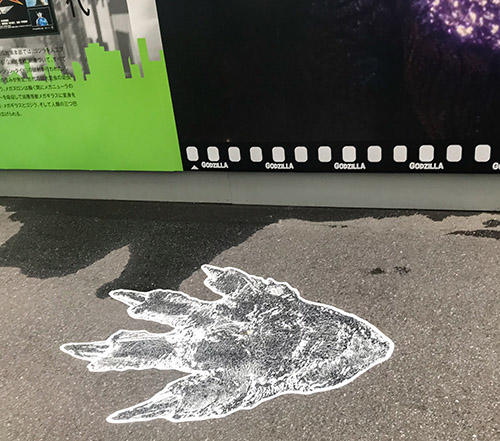
The total length is 140 meters, and if you walk slowly while watching, it will take about 15 minutes. There is a bench on the way. The period is until February 20 of next year. For more information, please visit our website.
Joban Bridge, which is the name of the development, is a wonderful stone arch bridge made in the Meiji era, and is currently under restoration. I'm really looking forward to seeing you again someday.
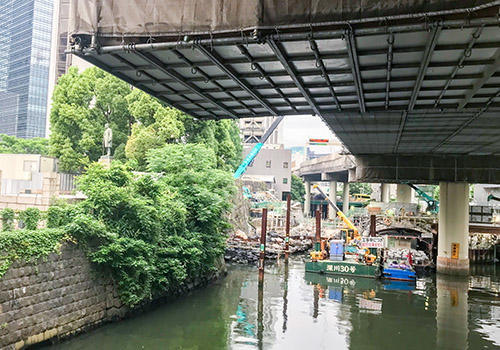
Crossing the Tokiwa Bridge north, you will find the statue of Eiichi Shibusawa, staring at the Japanese financial world. There are a number of Eiichi statues near Tokyo, and this is the most similar! I personally think, so if you like, please take a look at it. Money may rise...。 The money museum in the immediate vicinity is also very recommended. You can learn while experiencing the history of money, so I think that children during summer vacation can enjoy it. Admission is free!
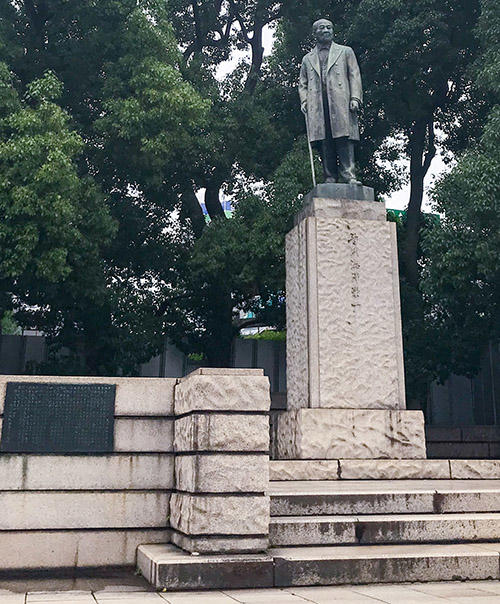
[Hanes]
July 23, 2018 12:00
Hello. This is a new correspondent, Hanes. 
This time, it is a continuation of "Chuo-ku (Part 1) in the history of firefighting".
As I introduced last time, looking for a water outlet in Chuo-ku, go to the Shimbashi Water Exit Museum!
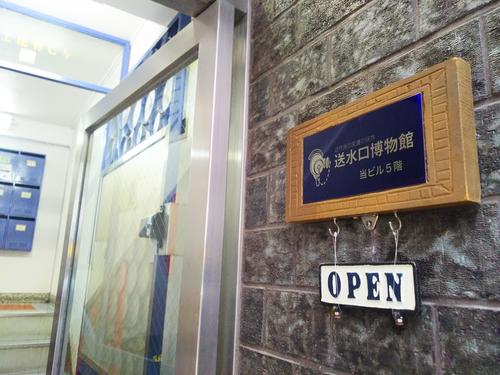
This was opened in 2015 on the 80th anniversary of the founding of Murakami Manufacturing Co., Ltd.
The museum is located on the top floor, and the landing includes a collection of water outlets and paintings by the director.
There is a way to keep visitors from getting tired even at one time.

Immediately after being greeted by the water outlet on the rooftop, I opened the museum door with a pounding.
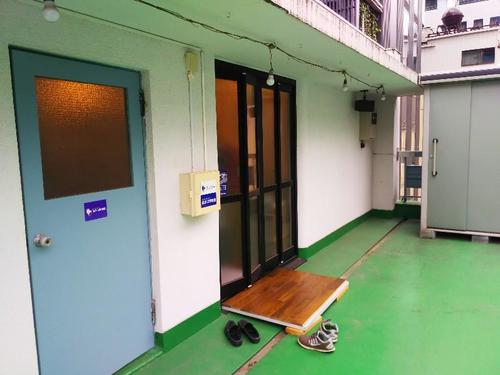
A very friendly director welcomes you, and there are many water outlets in the hall!
To briefly explain for those who say, "What is a water outlet in the first place?"
A water outlet is a part of the equipment that sends water to the floor when a fire occurs in a building or the like.
It may be better to say that it is a place to connect the hose of the pump car.
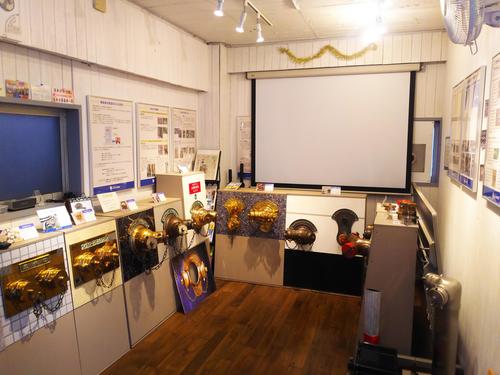
However, it doesn't have any buildings.
It is located in a building that is difficult to extinguish with a ladder truck or a fire helicopter, such as a building on the 7th floor or higher or a large underground shopping mall.
It's usually not in private homes or low-rise buildings.
When I asked about the water outlet in Chuo-ku immediately, I showed me the water outlet of the former Bridgestone headquarters building (Kyobashi).
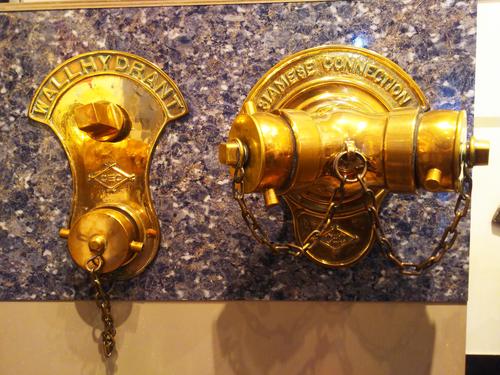 (Left: water sampling port, right: water outlet) (Left: water sampling port, right: water outlet)
The Bridgestone Museum of Art was located in this building (currently closed due to rebuilding work).
Isn't there some people who have been there?
In addition to the water outlets in English, which are now rare.
It is said that the director was particular about recreating the situation with the water outlet.
The background for the exhibition (different for each water outlet) is also a noteworthy point.
And there is even a face-to-face panel at this water outlet!
This is the only stoppage for Bridgestone's former head office building, even if you search all over the world.
It was a great deal, so I had other visitors take pictures.
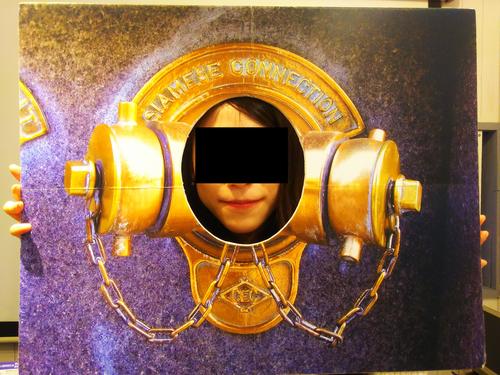
This museum seems to hold various events related to water outlets, such as a polishing party and a water outlet night.
If you want to refine your precious water outlets in Chuo-ku, please contact us.
Please check the museum's website and Facebook.
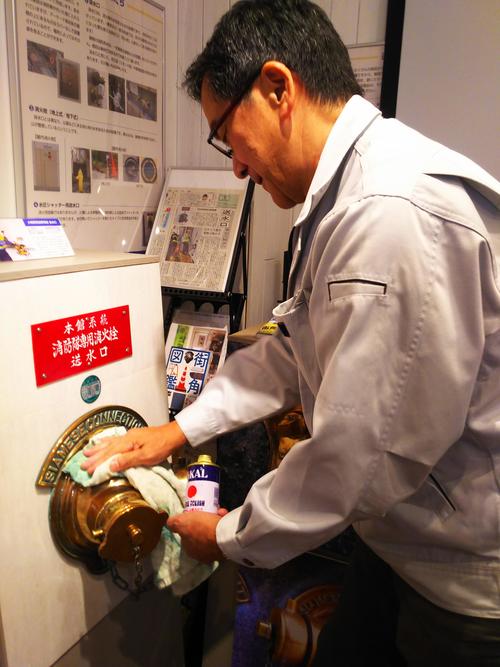
After leaving the museum, I visited the active water outlet in Chuo-ku, which was taught by the director.
I actually went to see it
First of all, Takashimaya Tokyo store is designated as an Important Cultural Property (Building).
Do you see something on the corner?
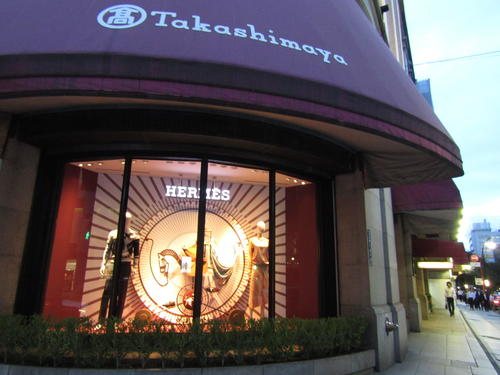
When I approached, there was a water outlet (manufactured by Murakami Seisakusho) with twin kanji notation!
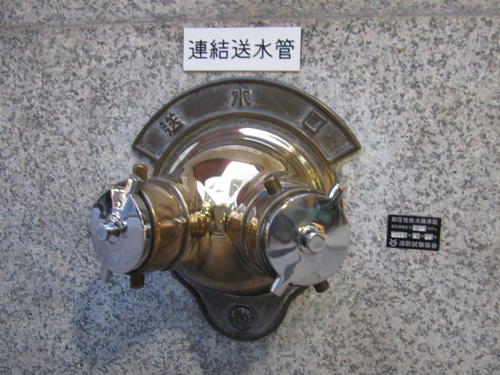
Next, we headed to the Shiga Bank Tokyo Branch in Kodemmacho.
Discover a rare water outlet installed on a fan-shaped plate
The name of the manufacturer can be seen below the fan shape.
Here, the company name of Murakami Seisakusho, which is related to the water outlet museum, was included.
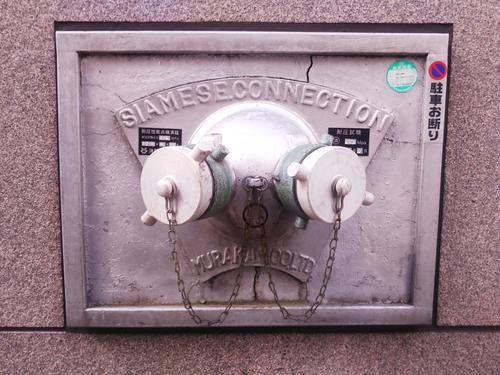
In addition, I saw a large building with a lot of water outlets, and then I saw it.
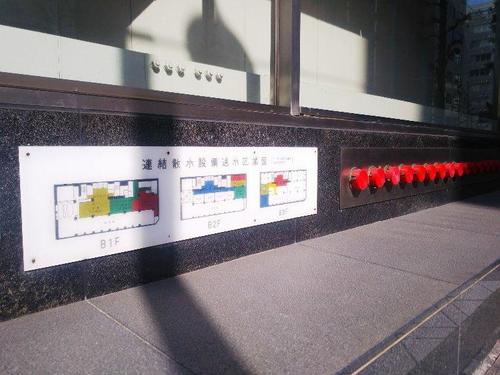
Around Kyobashi, I took pictures of various water outlets, including the water outlets written in katakana.
Since the water outlet is used in the event of a fire, it is a slightly unusual town hero who is happy to not use it (do not demonstrate its real territory).
It may be a facility that is hardly visible to us as ordinary people.
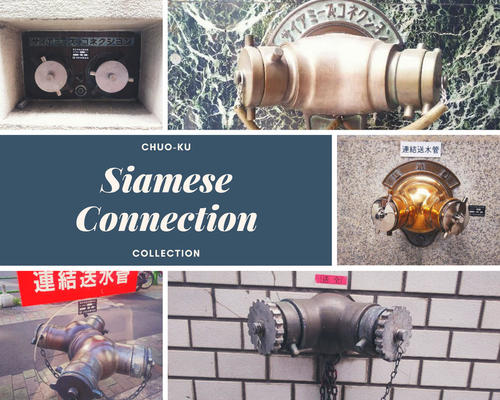
However, once you know the history of the water outlet at the museum, the way you view and taste the water outlet changes dramatically.
Indeed, it is "Takaga water outlet, but water outlet"!
Remembering the word "fire and fight are the flower of Edo" and looking at the water outlet while walking around the town.
It may be a white face unique to Chuo-ku
※Regarding the museum, the director has given permission to introduce and publish photos.
[Hanes]
July 21, 2018 18:00
Hello. This is a new correspondent, Hanes.
It was in the second half of July, and it was time for summer vacation at both company and school.
Some of you may be traveling far away.
This time, "Do you need an airplane? Continuing from the Greek and Italian excursions
Here are some recommended spots where you can enjoy Russia in Chuo-ku.
◼️ Russian-Soviet Union Film Festival
From July 10, the opening of the National Film Archive was held as a Russian year 2018 in Japan.
The "Russian Soviet Union Film Festival" is being held as follows.
Period July 10, 2018 (Tuesday)-August 5 (Sunday) ※Closed Monday
Venue: National Film Archive Nagase Memorial Hall OZU (2nd floor)
Website: 2018 Russian-Soviet Union Film Festival in Japan commemorating the opening of the National Film Archives
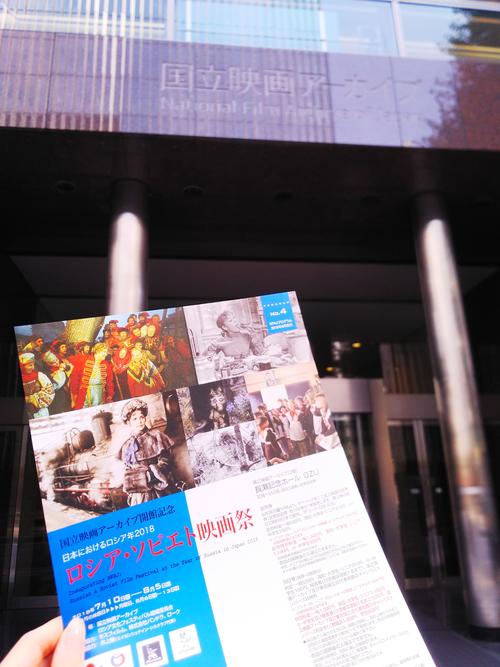
This film festival reflects socialism, war, emperors, and other social situations and ideas at the time of film production.
A lot of real works have been shown.
Some photos were taken at evacuation sites during the war, and completed after temporary suspension of photography.
Due to the pressure of the powers, it is difficult to disclose the information....He said
It is an interesting lineup not only for the content of the movie but also for the production background.
I am a novel by the Nobel Prize-winning author Mikhail Shorohov, which was screened on the 14th.
I've been watching movies based on "Human's fate (Original title: Звукava).
The protagonist, who was forced to suffer both physically and mentally due to the outbreak of World War II....
Despite the darkness of Russian literature in the 20th century, it is possible to do so.
It is a work with a strong message that is familiar to the present day, such as "I live strongly in any adversity in thinking of my family."
Also, it was the first director's work of Bondarchuk, who played the main character, and so on.
For those who like movies, I think you can enjoy it from another angle.
◼️ Russian cuisine
There are several restaurants in Chuo-ku where you can eat Russian cuisine.
One of the most important things is the Russian restaurant logoski.
Location: Ginza 5-7-10 EXITMELSA (Igjit Melsa) 7F
Business hours Please check the official website.
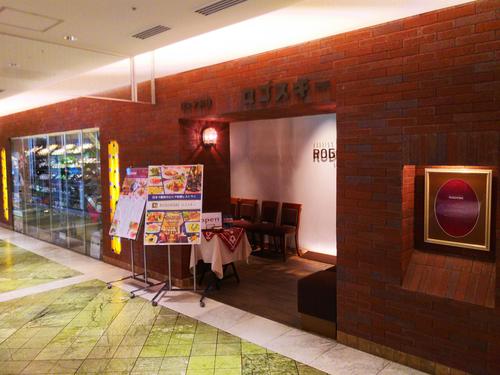
It seems that this is Japan's first Russian restaurant founded in 1951.
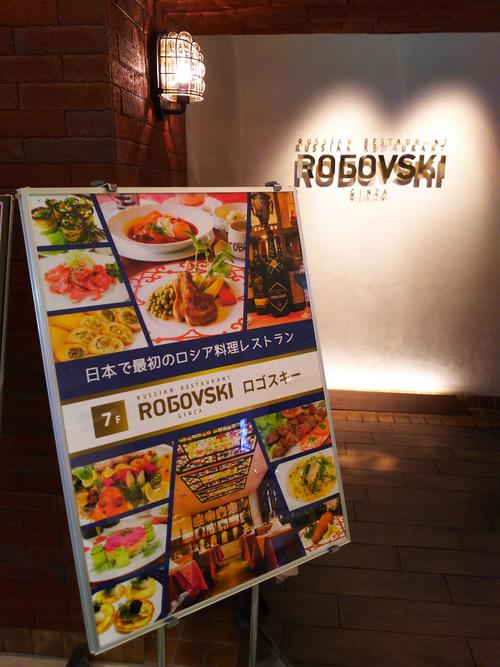
Not to mention Russian classics, piroshiki, borscich, and tsuboyaki.
Perimeni (water dumplings), recommended for those who are not familiar with Russian cuisine.
Nishin (Milfeuille-style salad) and Brinui (Russian pancake) wearing fur coats are also available!
Piroshiki can take out, and there is also a nice service for those who are in a hurry.
This time, I tried to take out piroshiki, a vegetable that reminds me of Russian home cooking with sour cream.
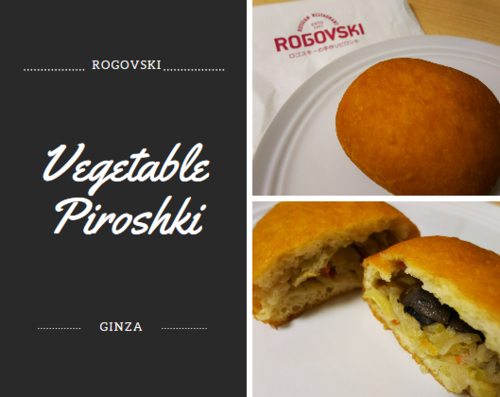
There is also a mushroom sauteed with vegetables.
When I was warmed and eaten, the flavor of sour cream was enhanced and it was delicious.
◼️ Image of Messenger
When it comes to Russian movies and cooking, I came to mind as a Russian-born person related to Chuo-ku.
Ossip Zackin, a sculptor who created the "Messenger Statue" at Chuo-ohashi Bridge!
(* I am from Russia during the Russian Empire era, so my hometown belongs to Belarusi.)
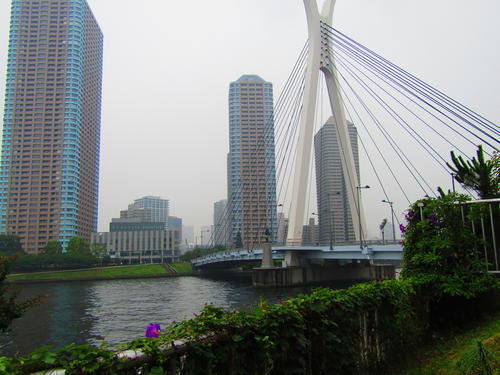
This statue was exhibited at the Paris World Exposition in 1937 and is considered one of his masterpieces.
It was also presented by Paris to commemorate the friendship between the Sumida River in Tokyo and the Seine in Paris.
Because he was based in Paris, the image of France may be strong.
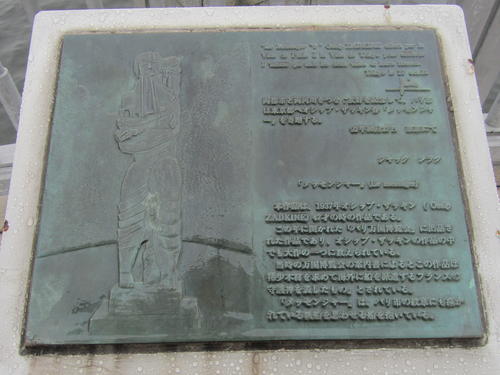
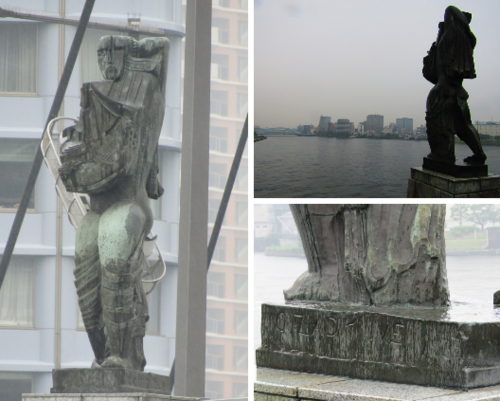
So far, we have introduced three spots related to Russia.
This summer, when exchanges with Russia are booming as the “Russian Year in Japan” are booming.
Why don't you experience Russian culture with your five senses in Chuo-ku?
※This article has been approved by the public relations officer of the National Film Archive and logoski staff.
|
Links
|





























































